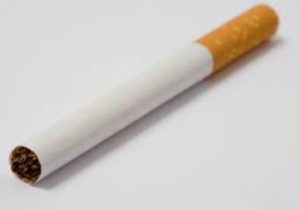Ever wonder what smoking does to arteries? Even though May 31 is World No Tobacco Day, our Houston vein specialists celebrate that one every day. Why? The day is meant to raise awareness of the terrible impact tobacco has on your health. Now, we likely all know that smoking impacts your lungs and raises your risk for many types of cancer. But did you also know that smoking harms your blood health? That is, unfortunately, the case, and it does so by limiting blood flow through your arteries and veins in two main ways.
Nicotine, the addictive chemical contained in traditional and e-cigarettes, causes your blood vessels to narrow. This narrowing limits the amount of blood vessels can carry and, over time, it causes them to become more rigid, losing flexibility. This stiffening of the vessels makes your heart work harder, in turn raising your blood pressure.
Tobacco use of any kind is also a strong risk factor for developing peripheral arterial disease (PAD). While plaque typically develops because of an unhealthy diet, the chemicals in cigarette smoke weaken the inner cell layer of our blood vessels, making it easier for plaque to stick to them.

When plaque is building up to dangerous levels, you will likely first experience leg symptoms. They may start to hurt for no apparent reason, especially while you’re walking. Why? As you walk, your body needs increased blood flow; if limitations in your arteries slow or stop that blood flow, you will experience pain. While it can be tempting to brush off this kind of pain as typical exercise related cramps, that's a bad idea, especially if you smoke. Any kind of leg pain is a symptom worth discussing with your doctor.
Another sign of developing PAD? Feeling a heaviness in your chest while you walk up the stairs. Of course, plenty of people feel winded when climbing multiple flights of stairs, but if you start to have problems after just a few steps, you should consider this a troubling warning sign.
If you have PAD, you may also experience other symptoms. Your wounds may heal slowly, because injuries need oxygen to heal, but narrowed or blocked arteries make it hard for healing oxygen to reach those wounds.
A change in toe color could also occur, since your blood is having a tough time reaching those lower extremities. As a result, they may start to lose some color, taking on a blue-ish tinge.
Finally, you may notice a loss of leg hair: Your hair follicles are nourished by blood flow; they die without a proper supply, causing your hair to fall out. Because of this, loss of hair (especially below the knees) is an easy way to spot PAD.
Many physicians consider smoking to be the biggest PAD risk factor. Why is that? Chemicals in tobacco interfere with how blood cells function. That can affect your heart as well. And one of the first ways it does so? Making it easier for plaque to build up in your arteries. As such, about 90% of PAD patients smoked in their past.
The picture gets worse when you look at the general population. Smokers risk of developing or worsening their case of PAD is about four times higher than that of non-smokers. But don't panic yet: by quitting smoking, you can greatly reduce your risk of PAD, heart attack, stroke and/or aneurysm (burst blood clot). Snubbing out this bad habit will also have positive effects in a number of different ways in regards to your overall health, so there is no reason not to quit!
If you smoke, talk to your doctor about any of the warning signs we've discussed, and start developing a plan to quit. Not ready to get into the doctor's office? Check out the resources at Smokefree.gov, and remember e-cigarettes and cigarette alternatives like Juul are equally dangerous, thanks to the nicotine they all contain!
Need more help managing the effects of smoking on your arteries? We're here to help. Just reach out to our specialists for an appointmentJust reach out to our specialists for an appointmentJust reach out to our specialists for an appointment. With proper care, we can help reverse the effects of what smoking does to arteries in your body.

Scheduling
Please contact our dedicated specialists to schedule a consultation today.
2024 Texas Endovascular. All rights reserved. Website Design by Healthcare Success